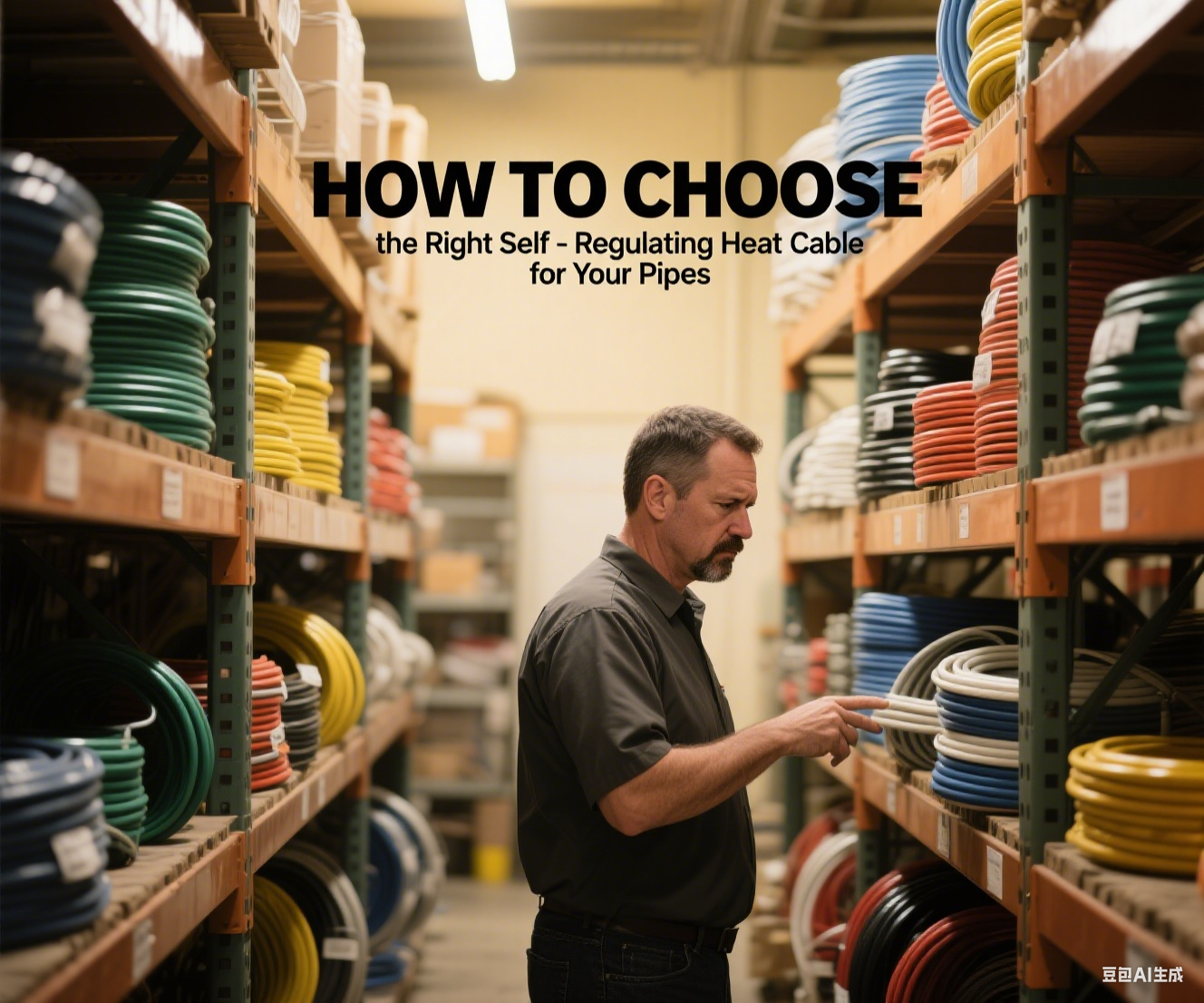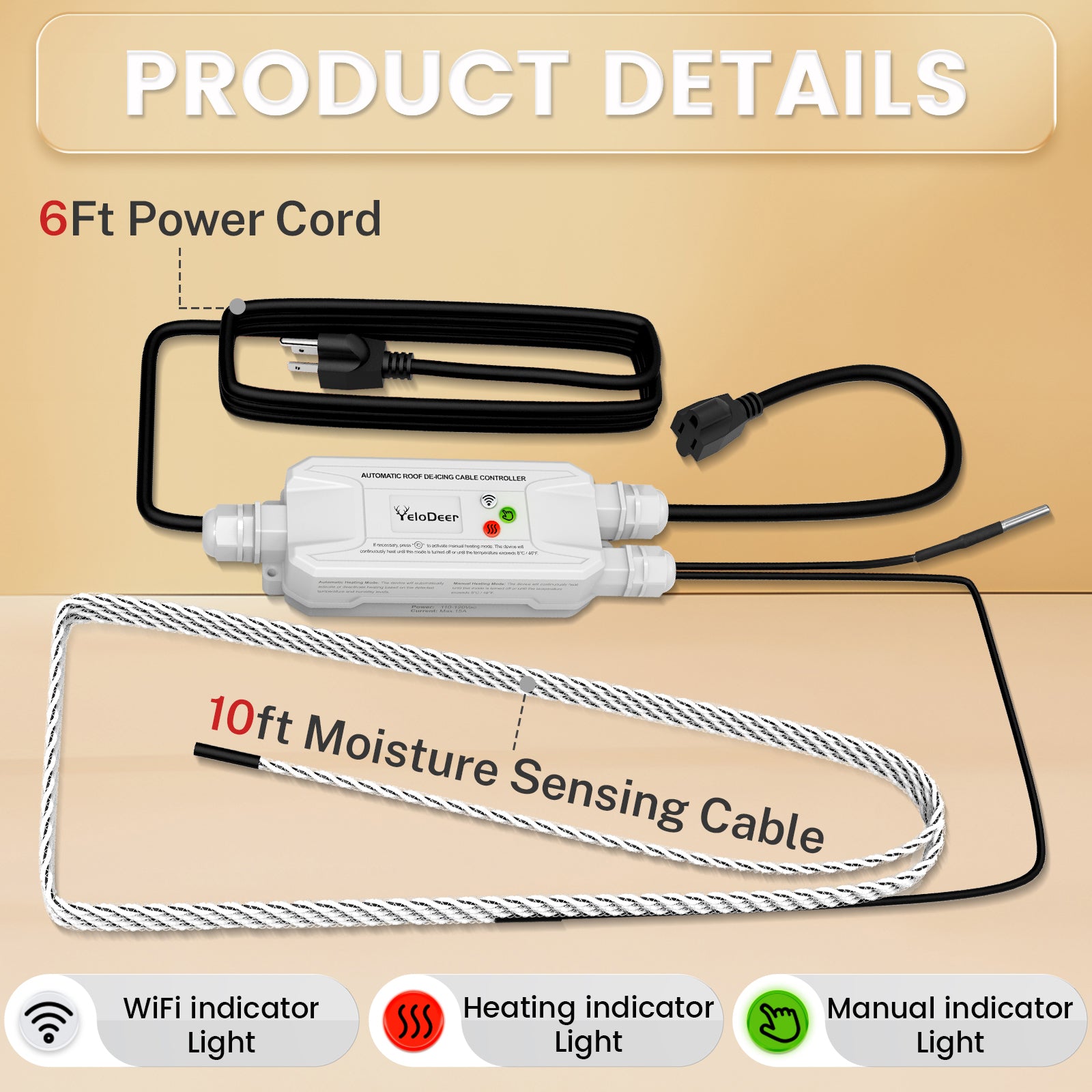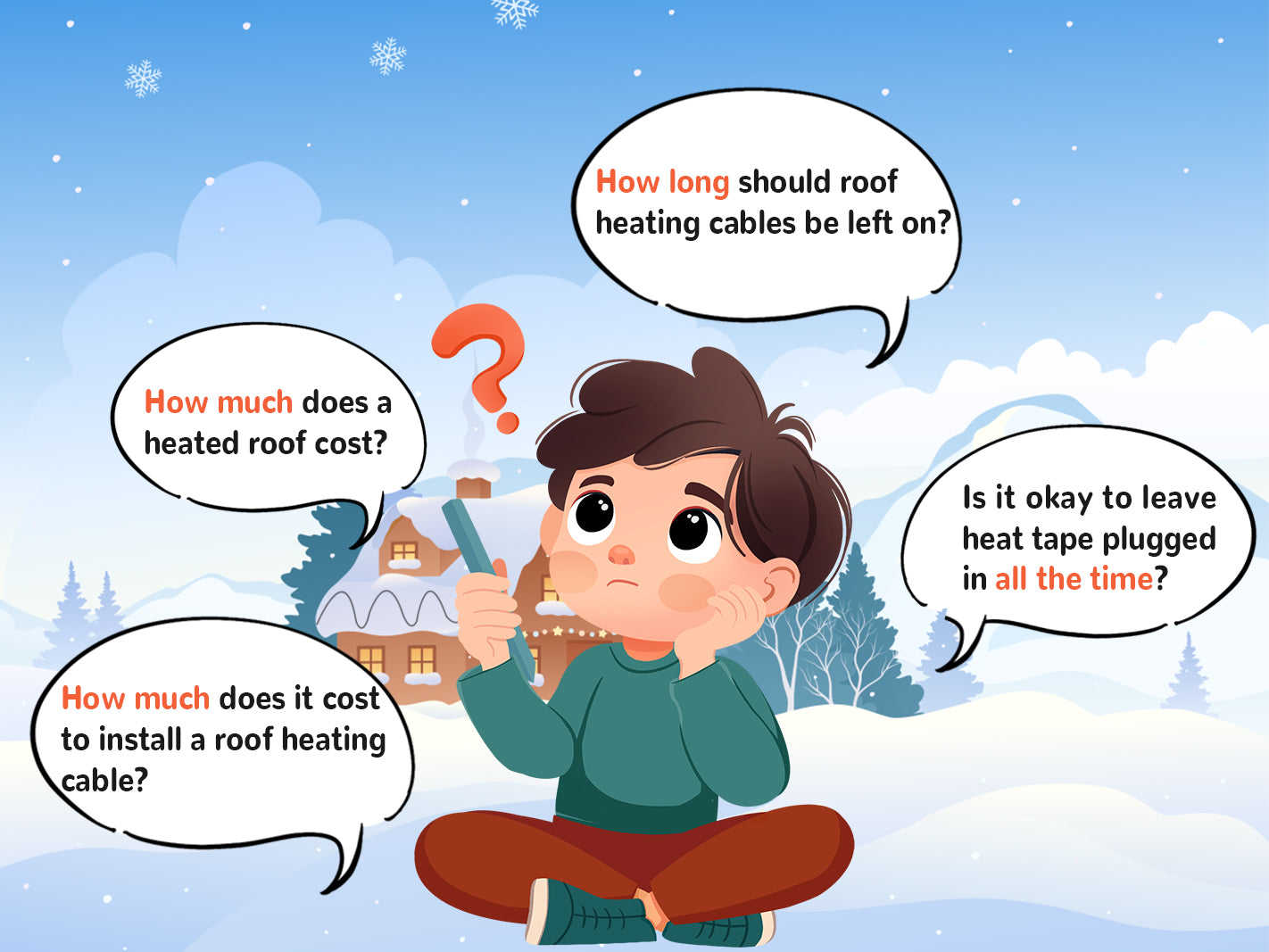How to Choose the Right Heat Cable for Your Pipes
This article will help you choose the most suitable YeloDeer self-regulating heat cable for your specific needs, whether it's for exposed pipes, drains/gutters, concealed drinking water pipes, or sewer lines....
Read moreYeloDeer Roof De-Icing Cable Controller: Comprehensive User Guide
The YeloDeer Roof De-Icing Cable Controller offers an automatic on/off feature with temperature and moisture sensors, ensuring efficient and energy-saving performance during winter months. This guide will help you understand...
Read moreAre Roof Heating Cables Expensive to Use?
This article provides an overview of the cost, lifespan, and energy efficiency of roof heating cable. It addresses common concerns about energy consumption and offers practical tips for homeowners. Additionally,...
Read moreSay Goodbye to Winter Hassles with the YeloDeer Electrical Thawing Blanket
Melt snow, thaw frozen ground, and protect equipment effortlessly with the YeloDeer Electrical Thawing Blanket. Perfect for construction, agriculture, and home use, it’s durable, efficient, and built for harsh winter...
Read moreHow Does Heat Tape for Pipes Work?
As winter nears, frozen pipes become a serious concern. Heat tape provides an effective solution by converting electricity into heat to keep pipes warm. This article explains how heat tape...
Read moreInstallation Guidelines for In-Pipe Heating Cable
Before installation, measure pipe length, check for sharp bends, and ensure the pipe diameter is over 3/4''. During installation, protect the cable’s outer jacket, purchase a separate T-fitting for non-standard...
Read moreWhat is SELF-REGULATING?
Self-regulating heat cables adjust power output based on external temperatures, providing efficient freeze protection and energy savings. Unlike constant wattage cables, they prevent overheating and reduce power consumption, making them...
Read moreHow Roof Deicing Cables Work and Choosing the Right Type
This article explores how roof deicing cables prevent ice dams and protect your home. It also compares the advantages and disadvantages of constant wattage and self-regulating heating cables, helping you...
Read moreIce Dams: Formation and Deicing Cable Benefits
Discover how ice dams form and damage your home. Learn how roof deicing cables prevent these issues, offering a safe, eco-friendly alternative to manual snow removal and chemical de-icers.
Read moreEssential Tips for Preventing and Thawing Frozen Pipes
Learn why pipes freeze, how to prevent it, and effective methods to thaw frozen pipes safely. Protect your plumbing this season with our essential tips and keep your home safe...
Read moreIn-Pipe vs. On-Pipe Installation for Pipe Freeze Protection.
This article explores the two primary installation methods for pipe heating cables—in-pipe and on-pipe—providing a detailed comparison of their advantages and disadvantages. It offers practical guidance on choosing the right...
Read more










